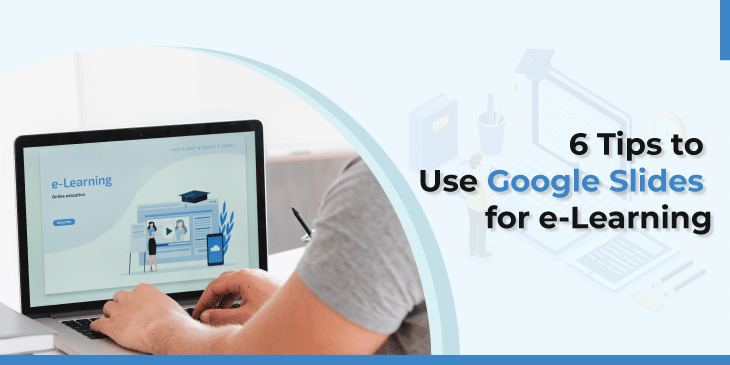There is no doubt that the Covid-19 pandemic has changed everyone’s lives. Nowadays, most things are done remotely – including education. Thanks to eLearning, instructors can continue teaching – without the fear of causing an outbreak.
While you can use many tools for eLearning, Google Slides prove to be very popular. Although it’s very easy to use, it is not without hurdles. So if you want to master this helpful platform, here are six tips that should help you out.
1. Keep it on the Cloud
Think about this: you’ve spent countless hours making a perfect presentation. Just when you’re on your last slide, the power turns off. Now you’ve lost a majority of the slides.
As this is every instructor’s worst nightmare, the best way to avoid this is to save everything in the Cloud.
The Cloud does more than just keeping your presentation secure. This also makes it easily accessible on your other devices. So if you need to do last-minute revisions, you can easily do so with your smartphone.
2. Sharing is Caring
Some students learn better when you talk about the subject (audio learners), while some fare better when they read the material (visual learners). And since the majority of people learn visually, you can help them master the topic by sharing the presentation outright.
A good thing about Google Slides is that there’s no need to download and upload files to do this. All you need to do is copy and share the link – and voila – instant access. You can even share the link through your school or course’s official website.
So when should you share this link? According to a Vanderbilt University report, it’s best to do this before your lecture. Results show that having a copy of the lesson helps students learn more.
The benefits of the Sharing feature are not limited to just your students, though. You can also send the link to your fellow instructors – especially if they want to add something to your Google Slides.
3. It’s All in the Presentation
It’s already hard enough to sustain the attention of students in the classroom. Now that they’re remote, the challenge is even more significant.
So if you want to keep your students tuned to your Google Slides, then you need to practice (and perfect) your presentation.
As always, it pays to prepare and map out your strategy in advance. For example, if you’re teaching younger students, engaging media may work better than a text-heavy presentation.
Whatever strategy you pick, you should remember this: avoid reading directly off your slide. Your students can do this by themselves!
Instead, you should discuss the information. What can the learners get from you that they won’t get from the Google Slides? Remember: that’s why you’re teaching them in the first place.
Another technique you could try is telling a story. Students will better relate to real-life stories. It’s easier to grasp concepts with a concrete, relatable example.
4. Be Visual
Remember how you lulled your students to sleep before because of your text-heavy presentations? Should you continue doing this with your Google Slides, you can’t expect your learners to pay any attention at all.
If you want to sustain their attention, then you need to be creative with your presentation. You need to be visual.
This starts with using the proper presentation design. You don’t want to use a template with too many distracting colors. They’re confusing, if not headache-inducing. As such, it’s best to go with a simple, professionally made Google Slides Templates.
Additionally, you should keep everything else to a minimum. Avoid using clipart, sounds, music, or animations. They make your Google Slides look confusing – and a tad bit amateurish.
It would be best if you used techniques that actually promote learning. Good examples include:
- Bolded, italicized, or highlighted key points
- Short phrases instead of lengthy paragraphs
- Bulleted or numbered lists instead of heavy text
- Relevant pictures
- Instructional videos
5. Link your sources
Maybe your students want to delve deeper into a topic you’ve just discussed. Instead of replying to every query, it’s best to embed the link on the get-go. With this, your learners can access the references you’ve used, be it an e-Book, whitepaper report, or video presentation.
6. Ask for Feedback
You won’t know if you’ve given a good presentation if you don’t ask your learners.
Getting feedback is an excellent way to improve your Google Slides presentation. Maybe they have suggestions that will enhance the overall eLearning experience.
As they’re the ones on the receiving end of the spectrum, your experience is entirely different from theirs. As an instructor, you owe it up to them to make the eLearning activity even better!
Indeed, Google Slides have made the whole eLearning process better. And since there’s always room for improvement, following these six tips will help you achieve them.
